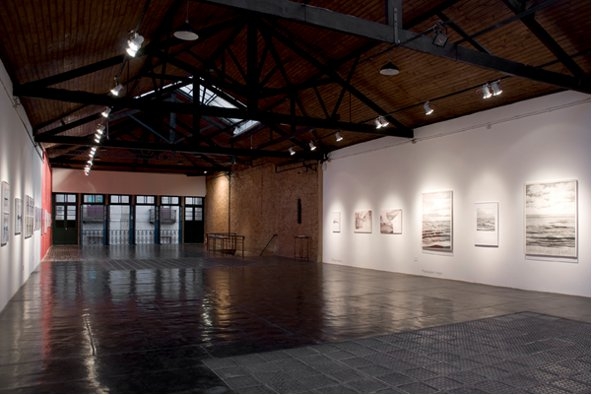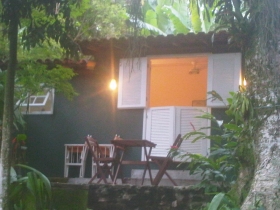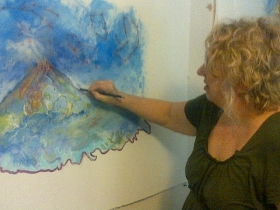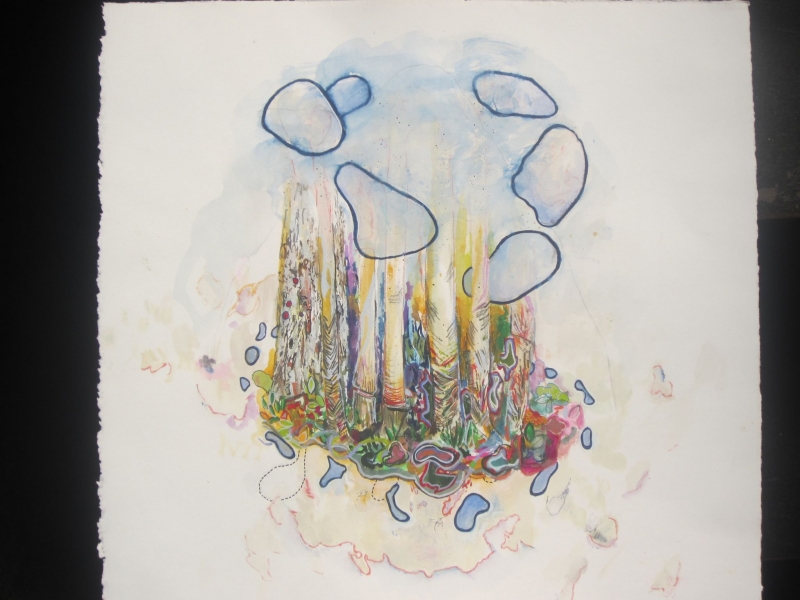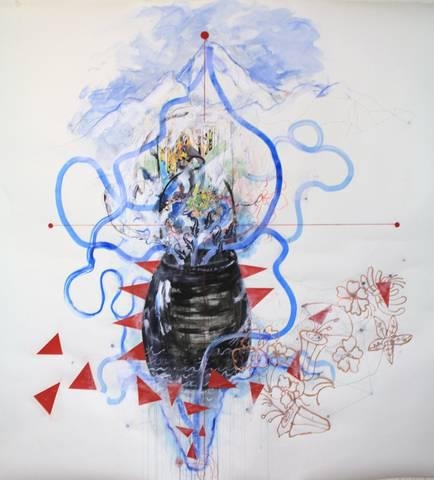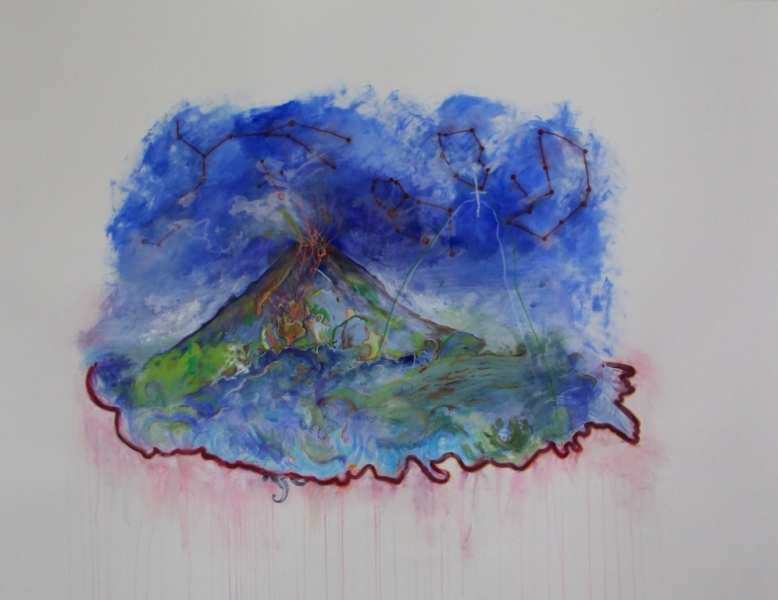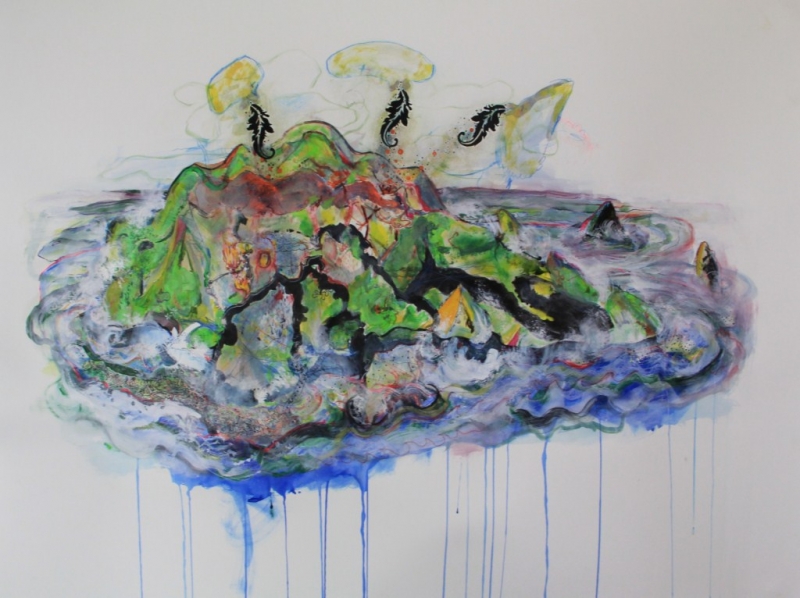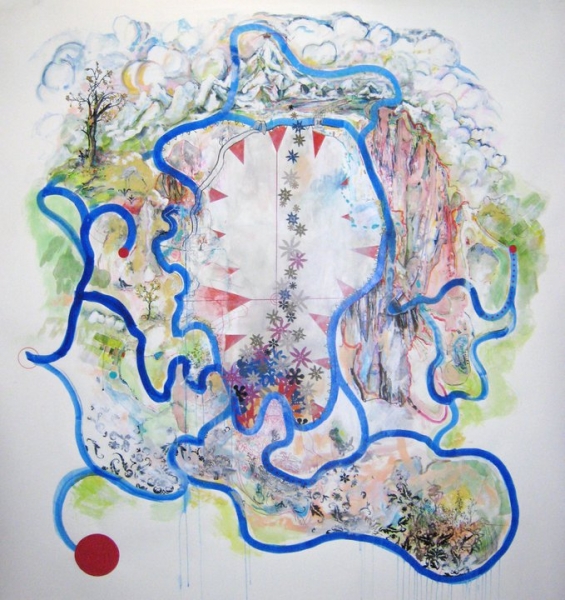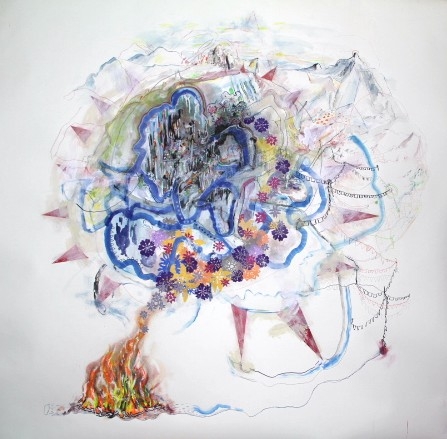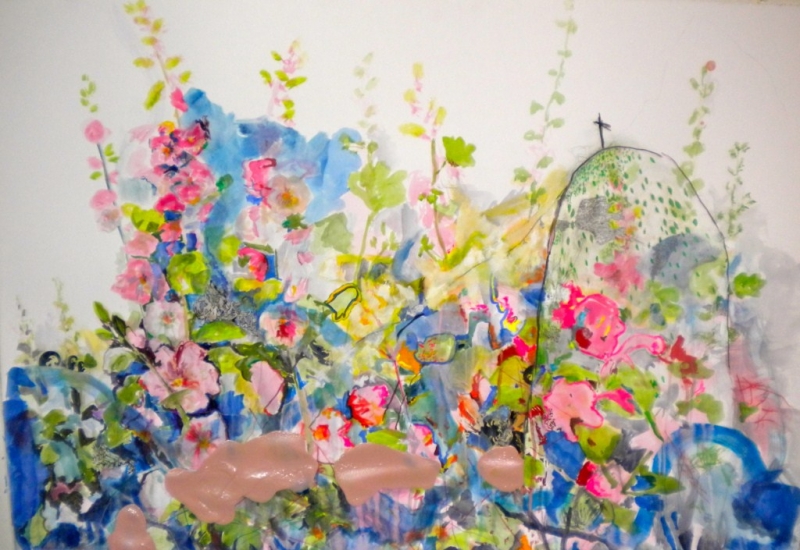Sue Chenoweth: Real and Applied
Cristo Redentor, 2012
Gouache, acrylic, ink, graphite, vinyl and Pantone paper on paper
30 x 44”
Private Collection, Phoenix
November 16 – December 31, 2012
Modified Arts, Phoenix, Arizona USA
Organized by Phoenix Institute of Contemporary Art (phICA)
Curated for phICA by Ted G. Decker
Largo das Artes, Rio de Janeiro, Brazil
August 4 – September 22, 2012
Organized by Phoenix Institute of Contemporary Art (phICA) and Largo das Artes
Co-Curated by Martha Pagy and Ted G. Decker
Artist’s Residency at Largo das Artes in Rio de Janeiro, July 5 – August 8, 2012
The fourth exhibition project for Phoenix Institute of Contemporary Art (phICA) is the Phoenix presentation of Sue Chenoweth: Real and Applied, an exhibit that originated at Largo das Artes Gallery in Rio de Janeiro (August 4 – September 22, 2012). It features all new work, previously unseen by Phoenix audiences, and includes paintings made for the Rio de Janeiro presentation as well as three monumental works that were shown in Philadelphia in 2011.
The two presentations of this exhibition and the culturally-immersive residency experience, while spotlighting a member of the Phoenix Creative Community, have broader applications and ramifications for all in terms of process and practice. After phICA’s Declaring Independence exhibition in October, 2011, I tested my thesis that one reason for many artists being independent, in some cases not represented by commercial galleries, is that the right eyeballs simply haven’t seen the art. I selected a sampling of images of work by Sue Chenoweth and emailed them along with her Curriculum Vitae to about 25 gallerists, collectors, and curators around the world with this first sentence: I am not asking you to buy or show this work; I simply want your comments and feedback about the work.
I received general comments (‘nice’, ‘interesting’) from some, nothing from others, and two noteworthy responses. One was from a gallerist in the United States saying that he liked the work and on a future trip to Phoenix would like to meet Sue and visit her studio. And, subsequently, I received an email from Martha Pagy, director of Largo das Artes, Rio de Janeiro, exclaiming “I love this work!” and asking “May I show it?”. That is how this project started and it organically grew into phICA being a collaborator, Sue attending the residency, the presentation in Rio, and now the presentation in Phoenix. In the sea of images from the Internet and social media, decision maker targeting rather than wide-shot spraying of images is an effective tool in professional artist career practices. Another is seeking out opportunities for artist residencies.
The Rio de Janeiro presentation capped a 5-week artist residency by Chenoweth that focused on cultural immersion rather than art making, a primary component of phICA’s mission. The events in Rio provided a platform for phICA to illuminate the Phoenix cultural scene in Brazil (works by seven Phoenix-based artists were also shown in a concurrent exhibit), and to facilitate the introduction of Phoenix Mayor Greg Stanton to Rio de Janeiro Mayor Eduardo Paes and the Rio community via video made by Mayor Stanton that played during the exhibit. The exhibition is phICA’s first international collaboration, as well as the first solo international exhibition for Chenoweth.
In spite of the seemingly chaotic and experimental nature of her work, Chenoweth employs a strong foundation of art history, technical knowledge, and formal-gone-wild approach to making art. Each mark she makes is deliberately considered, instinctual, and functions as a reciprocal motion between the work and her. Chenoweth says, “I go where my fear is. I want to capture the essence of a thing.” She asks viewers to experience the bits of feelings we all have behind our thoughts and to explore their primary sensory essence. Her work has been described critically as “some of the most exciting being produced in the West today due to her characteristic emotional fire and frenzied brushwork.”
While making work for this exhibition, Chenoweth explained, “I use the term ‘Real and Applied’ to explain how I paint conceptually. I paint ‘pre-memories’ of what it would be like to go on an adventure. Then I paint the actual experience of the adventure after or during having it.” Self-described as a “process oriented intuitive painter,” Chenoweth never knows how everything will tie together in the end. “Painting is a spiritual process for me, and I have to fall into an abyss of unknowing to get to a new place of understanding.”
Sue Chenoweth earned a Master of Fine Arts degree from Arizona State University and teaches painting, drawing, and art history at the Metropolitan Art Institute, Phoenix. She was awarded a Contemporary Forum/Phoenix Art Museum Artist Materials Grant in 2000. She was a featured artist in New American City: Artists Look Forward (2006) at ASU Art Museum and at Scottsdale Museum of Contemporary Art in Spyhopping: Adventures with Sue Chenoweth and the Permanent Collection (2010). Her work has been shown in numerous regional exhibitions including the 2003 Arizona Biennial at Tucson Museum of Art and Sue Chenoweth: Predator and Prey (2009) in Phoenix, a solo exhibition titled The Rich Man (2005) at the Cue Art Foundation, New York, in Here (2011) at Pennsylvania Academy of Fine Arts, Philadelphia, and in phICA’s second exhibition project Declaring Independence also in 2011. Chenoweth’s artwork is actively acquired by an increasing number of enthusiastic collectors and by well-known museums, and two works were recently acquired by international collectors in Rio de Janeiro. -Ted G. Decker
In the phICA Creative Community Outreach Spotlight
Demonstrating phICA’s commitment to contemporary culture in Phoenix, our Community Outreach Spotlight will be on Rashaad Thomas and Theresa Harnois who have created a work of art inspired by the work of Sue Chenoweth.
Rashaad Thomas is a USAF Veteran, Fashion Designer/ Stylist, and Yoga Instructor. He has been designing since 2010, but recently began to share his ideas about the art of fashion with the world. He believes that the art of fashion should enhance the image of human beings and personality through equality and the advocacy for civil and human rights.
Theresa Harnois, a Phoenix resident since 1976 and former Special Education teacher, has developed a hobby in “wearable art works” jewelry design into a passionate pursuit and business venture. Her highly sought after “wearable pieces of art” are inspired the environment and contemporary trends. Offering a counterbalance to fashion’s desire to sell ready-to-wear garments, Theresa and Rashaad have partnered together to create Ra-harT with the goal of reviving the art of fashion and bring it to the forefront of the art world.
Rashaad and Theresa, inspired during a morning meditation by the movement within several of Sue Chenoweth’s paintings along with the stillness of the Phoenix landscape, created Prakriti (Sanskrit for nature), an embodiment of five elements of nature – fire, wood, water, earth, and space. Collaborating with Phoenix-based glassblower Elizabeth Disken, recycled materials were utilized when possible.



